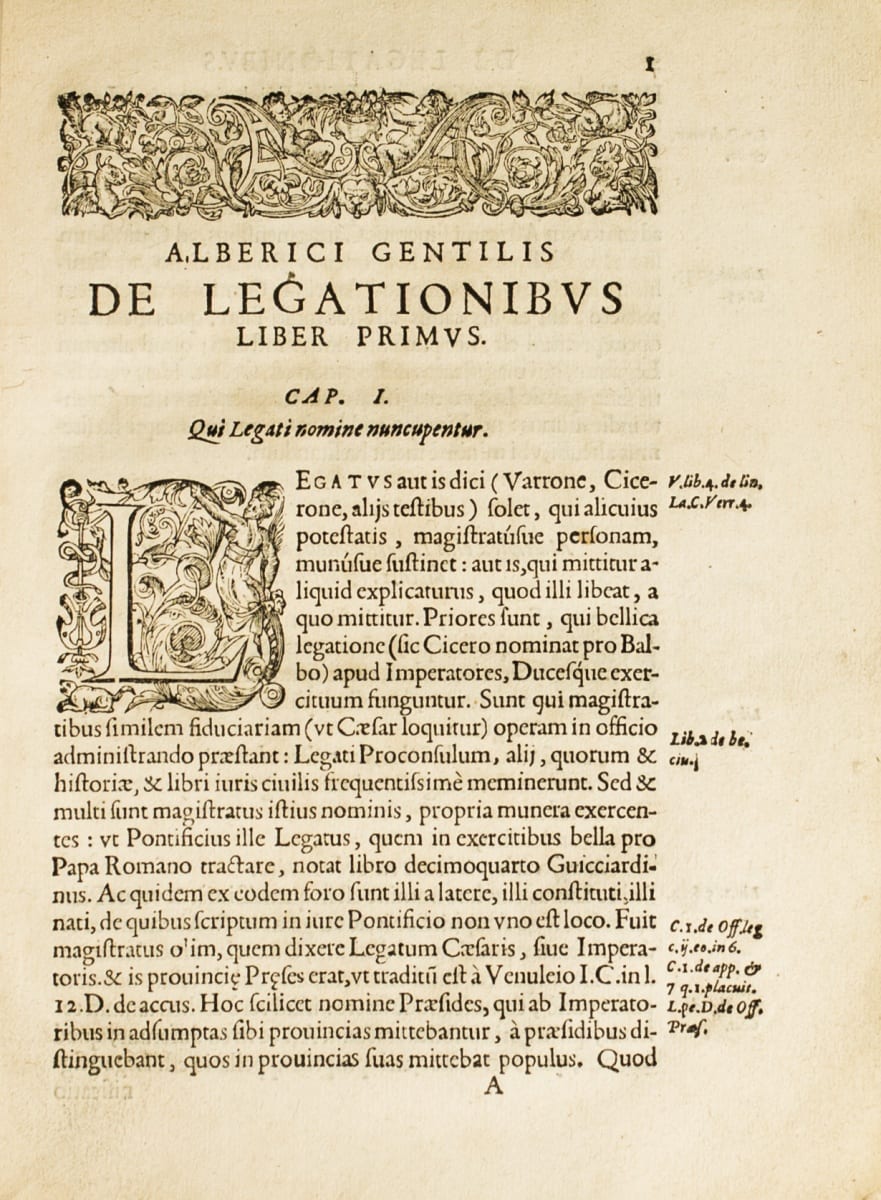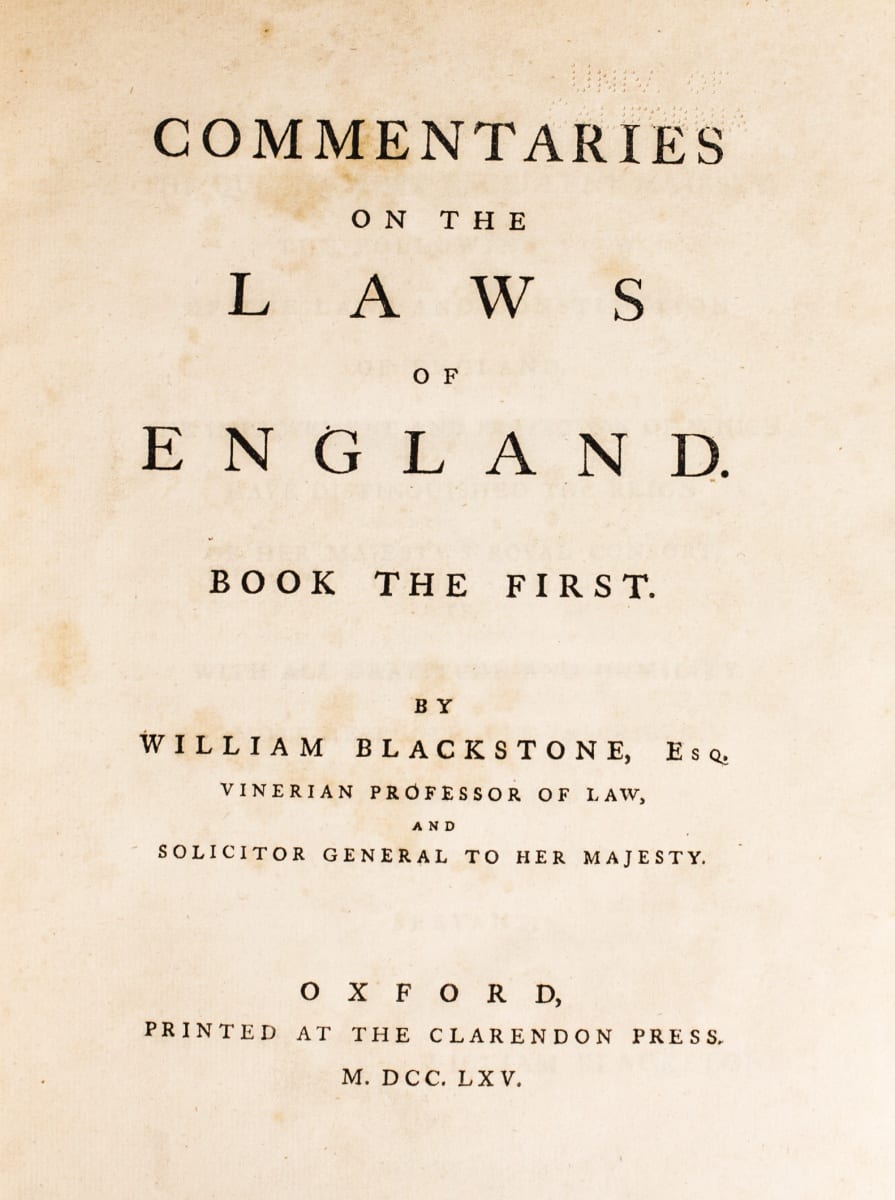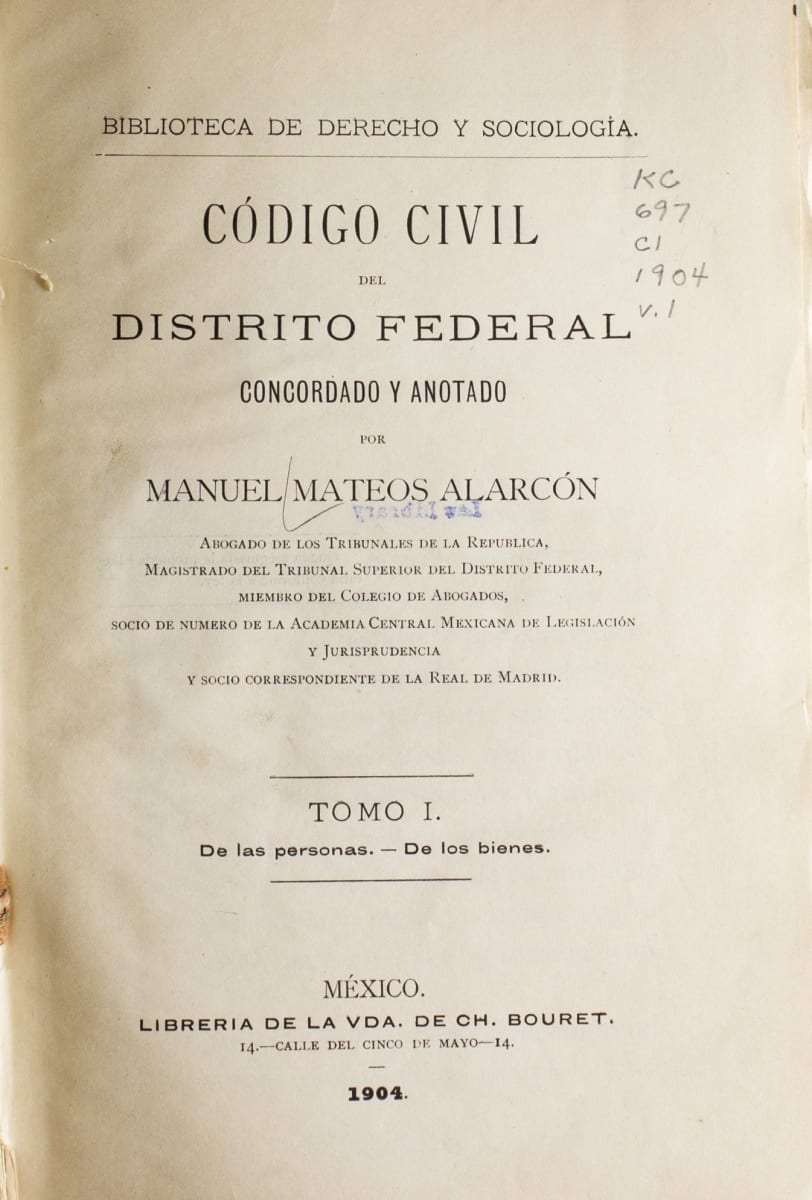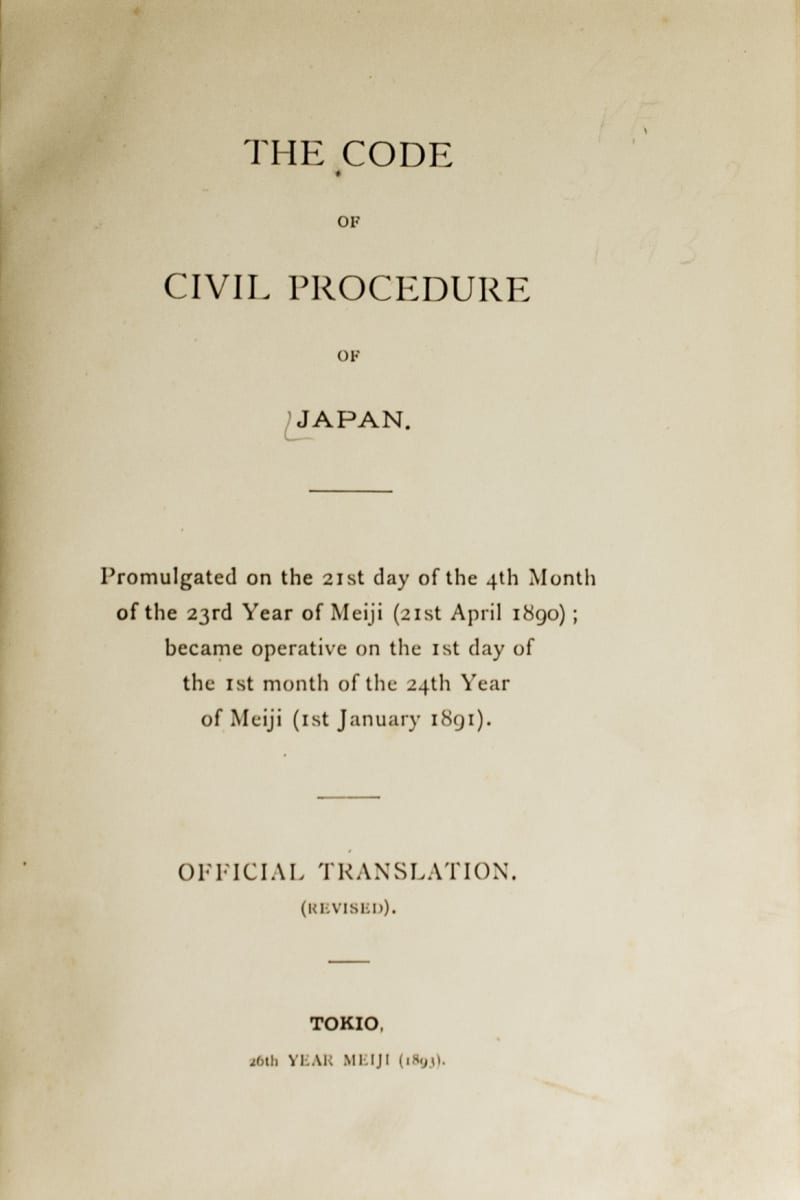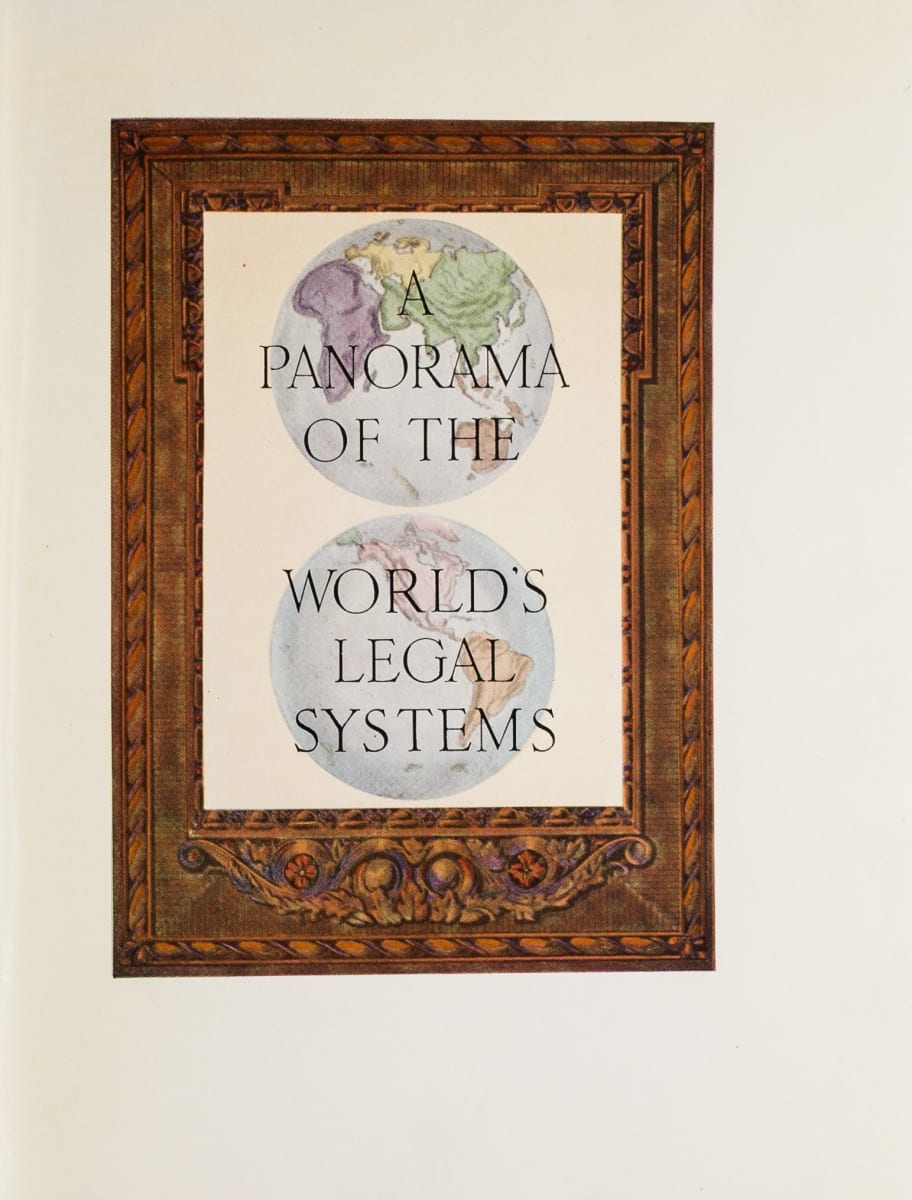August 16 – September 30, 2007
University of California, Berkeley, School of Law
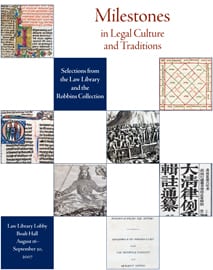 Each text featured in this exhibit represents a milestone in the development of law in one of its manifold forms, from the traditions of scholarship and practice that developed through centuries and across continents, to the diverse and complex legal cultures of the present day. These landmark works in civil law, common law, international and comparative law, religious law, and world legal cultures range from manuscript and early printed texts to new groundbreaking material, and demonstrate the depth and diversity of resources of the Robbins Collection and the Berkeley Law Library.
Each text featured in this exhibit represents a milestone in the development of law in one of its manifold forms, from the traditions of scholarship and practice that developed through centuries and across continents, to the diverse and complex legal cultures of the present day. These landmark works in civil law, common law, international and comparative law, religious law, and world legal cultures range from manuscript and early printed texts to new groundbreaking material, and demonstrate the depth and diversity of resources of the Robbins Collection and the Berkeley Law Library.
The North French Hebrew Miscellany.
London: Facsimile Editions, 2003. Limited facsimile edition of British Library MS II639.
This thirteenth-century manuscript is a rare treasure of medieval Hebrew learning and literature, comprising 84 groups of texts including a wide range of poetry, biblical texts, writings on ethics, legal codes and formulae for agreements concerning marriage, divorce and business partnerships, laws governing Tefilin, ritual slaughter, and an abundance of other texts. It is one of the few surviving illuminated Ashkenazi Hebrew manuscripts from the High Gothic period, when this school of illumination reached a peak of excellence in northern France. The extent of the illumination is remarkable, with most of the nearly 1,500 pages bearing decoration in the most refined style of the period.
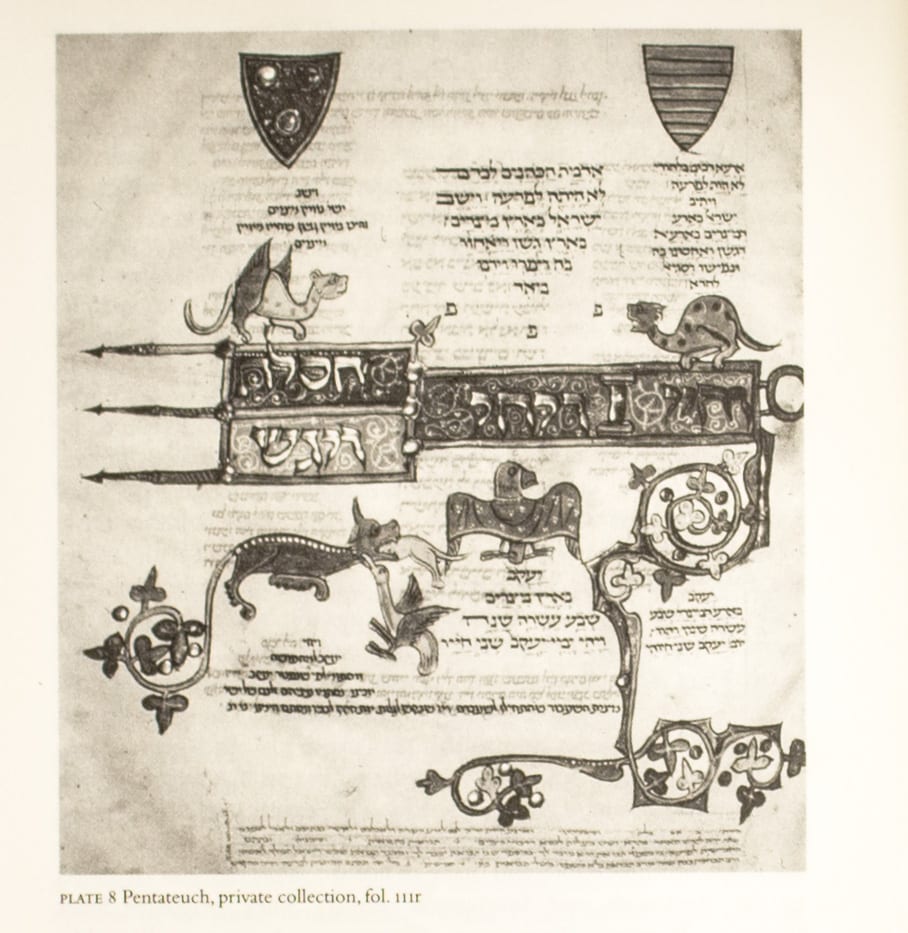
Decretales cum glossa Bernardi Bottoni.
Paris?, between 1250 and 1300.
Commissioned by Pope Gregory IX in 1230 and issued by him in 1234, the Decretals were the definitive collection of papal decrees issued in response to appeals or requests for advice on matters of discipline, representing the culmination of a long process of systemizing laws made by popes since the Decretum of Gratian was adopted as the code of the ecclesiastical laws (Corpus iuris canonici) in the middle of the twelfth century. Manuscript on parchment; written in a textualis libraria script.
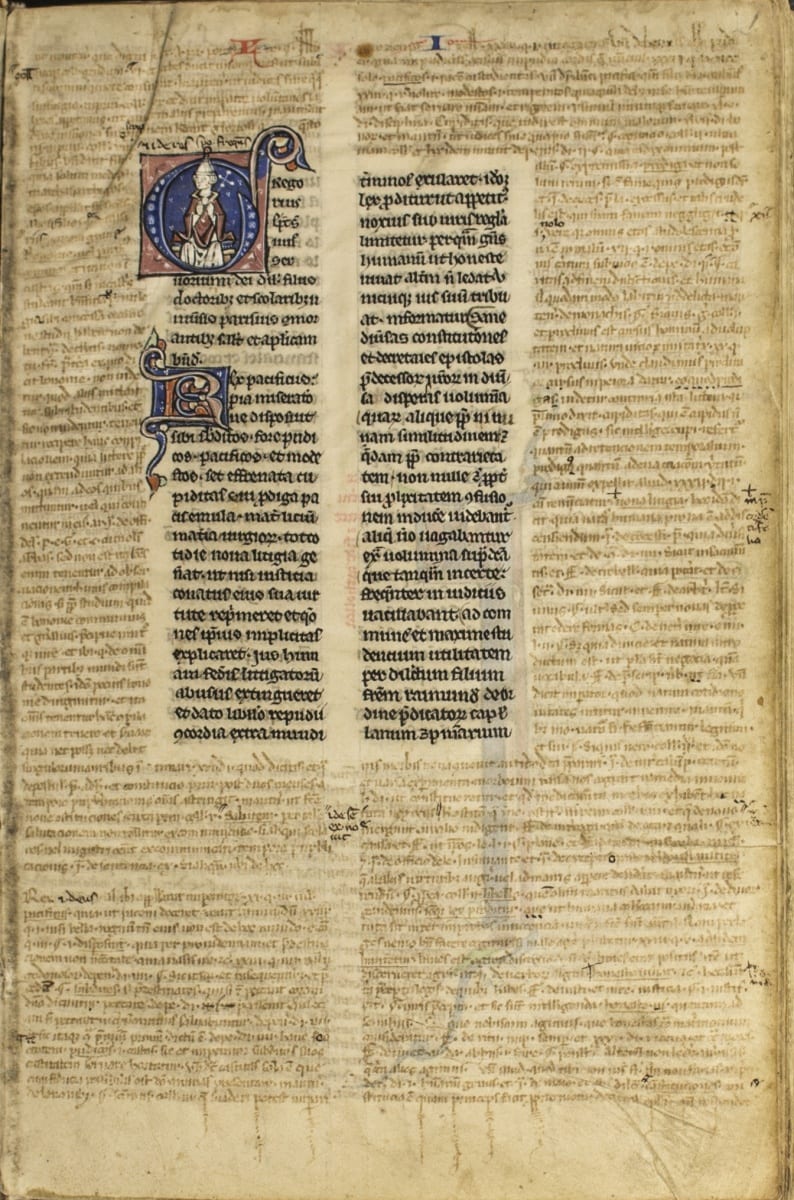
Justinian, Institutiones.
Venice: Jacobus Rubeus, 20 July 1478.
The Byzantine emperor Justinian’s sixth-century compilation of Roman law became the foundational source for Roman law in the Western tradition. All later systems of law in the West borrowed heavily from it, including the civil law systems of Western Europe, Latin America, and parts of Africa, and to a lesser but still notable extent the English common law system. The original compilation consisted of three different parts: the Digest (Digesta), the Code (Codex), and the Institutes (Institutiones). The Digest (533 CE) collected and summarized all of the classical jurists’ writings on law and justice. The Code (534 CE) outlined the actual laws of the empire, citing imperial constitutions, legislation and pronouncements. The Institutes (535 CE) were a smaller work that summarized the Digest, intended as a textbook for students of law. The illuminated incunable edition (below) of the Institutes was produced in the late fifteenth century, during the earliest
decades of printing.
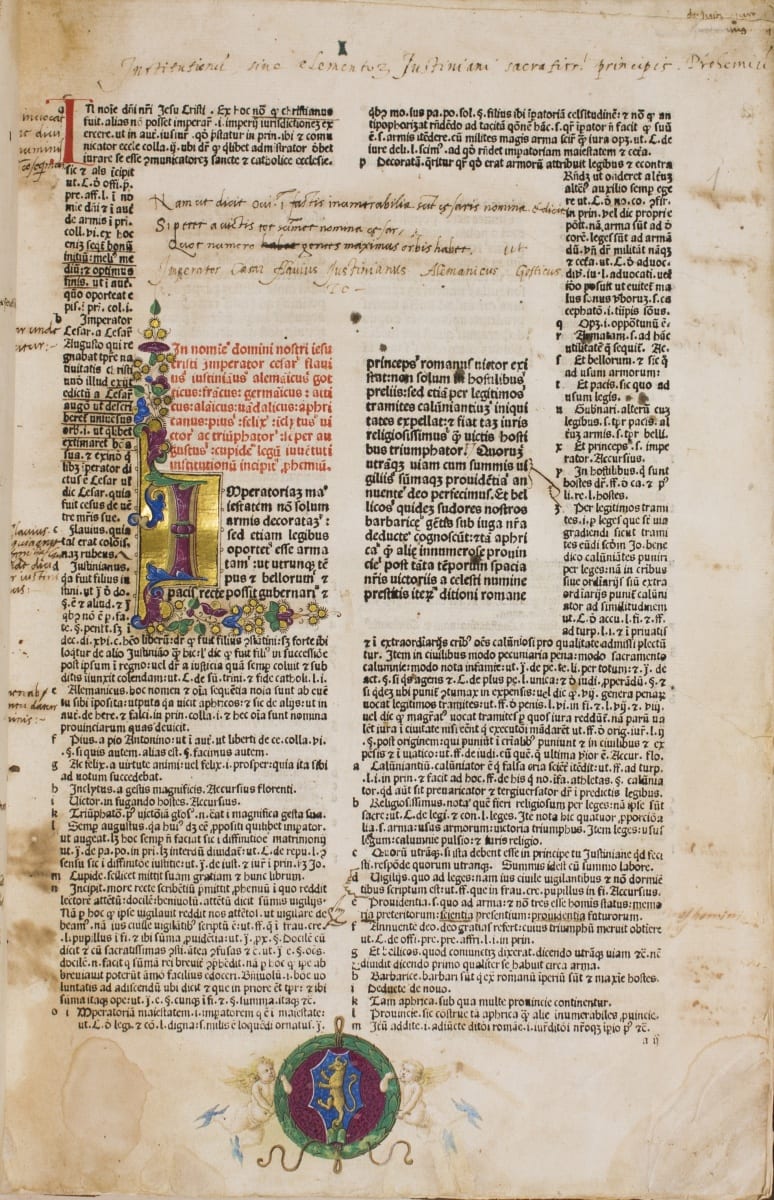
William Lyndwood, Constitutiones provinciales Ecclesiae Anglicanae.
Oxford: Theodoricus Rood, 1483.
This is the first book that Lloyd Robbins donated to the Law School and the first edition of Bishop William of Lyndwood’s collection of conciliar constitutions issued by archbishops of Canterbury beginning with Stephen Langton at the Council of Oxford (1222). A chancellor to the archbishop of Canterbury, Lyndwood compiled the Provinciale to bring order to the often unordered existing collections of conciliar canons upon which legal arguments were commonly founded and to provide these texts in a single, reliable version. This work was among the first books printed at Oxford and is one of the first law books printed in England.
Ulrich Tengler, Der neü Layenspiegel…
Augsburg: Hansen Otmar, 1512.
Der neü Layenspiegel, or The New Layman’s Mirror, stands in a long medieval “mirror” tradition that provided guidance in moral, theological, and legal matters. Originally pubulished in 1509, this “new” edition was revised and published shortly after Tengler’s death in 1511. It took as a model Guillelmus Duranti’s thirteenth-century Speculum iudiciale (The Judicical Mirror) and the subject matter of its first three sections: persons, civil process, and criminal process. Tengler, however, wrote for a less sophisticated readership, a mix of practitioners and non-lawyers. The enormous success of this compendium of legal science and practice, of which over a dozen editions were published in the sixteenth century alone, reflected the growth of popular literature and education in Germany at the time.
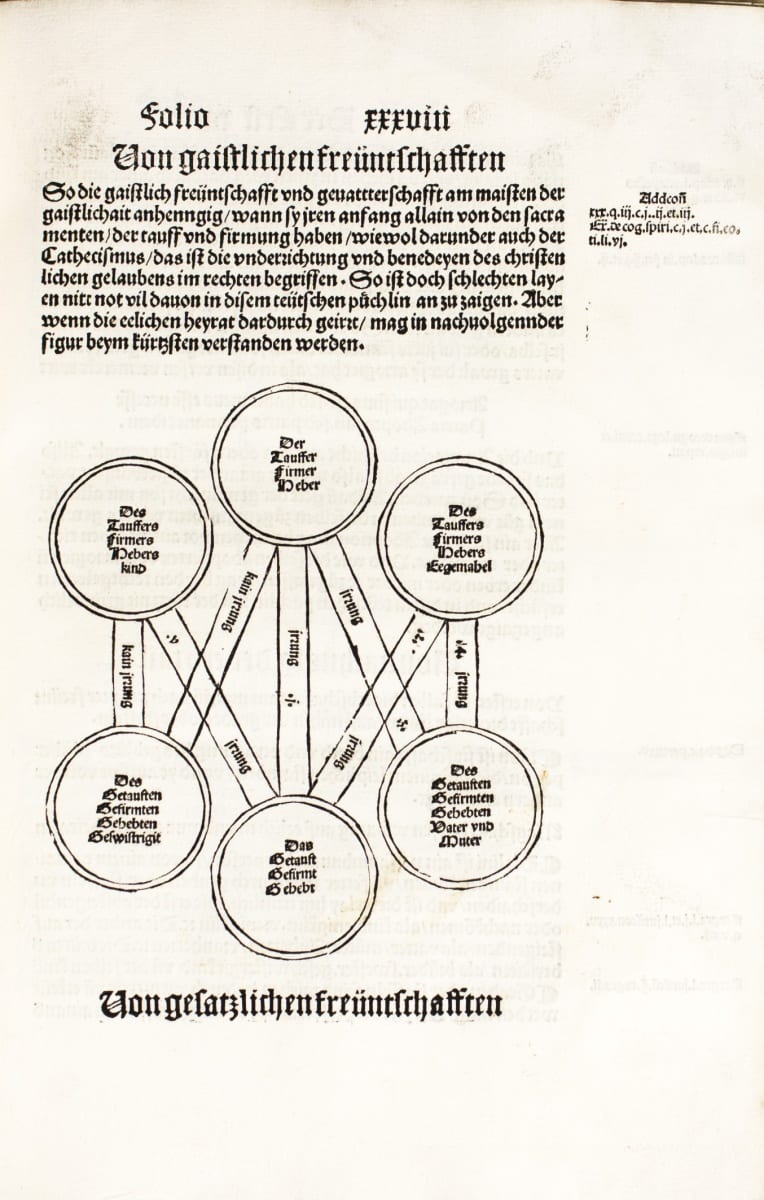
Fray Alonso de la Vera Crúz, Speculum Conjugiorum.
Mexico: Juan Pablos, 1556.
Printed by the first printer in the New World, Juan Pablos, the Speculum Conjugiorum is one of the earliest American law books, and the first American book in italic type. Alonso de la Vera Crúz helped found the first American university in Mexico City. Born Alfonso Gutierrez, he was a pupil of famous scholar Francisco de Vitoria at the University of Salamanca in Spain. He took orders as an Augustinian shortly after his arrival at Veracrúz in 1535. Elected provincial of his order in 1548 and founder of numerous convents and libraries, Vera Cruz has been called colonial Mexico’s founding intellectual. Devoted to legal issues and other questions of matrimony, the Specululm Conjugiorum is structured in three parts, on marriage, conversion, and divorce. The work offers details of the laws, customs, and traditions of native peoples, with emphasis on the legal questions arising from marriage between natives and Spaniards.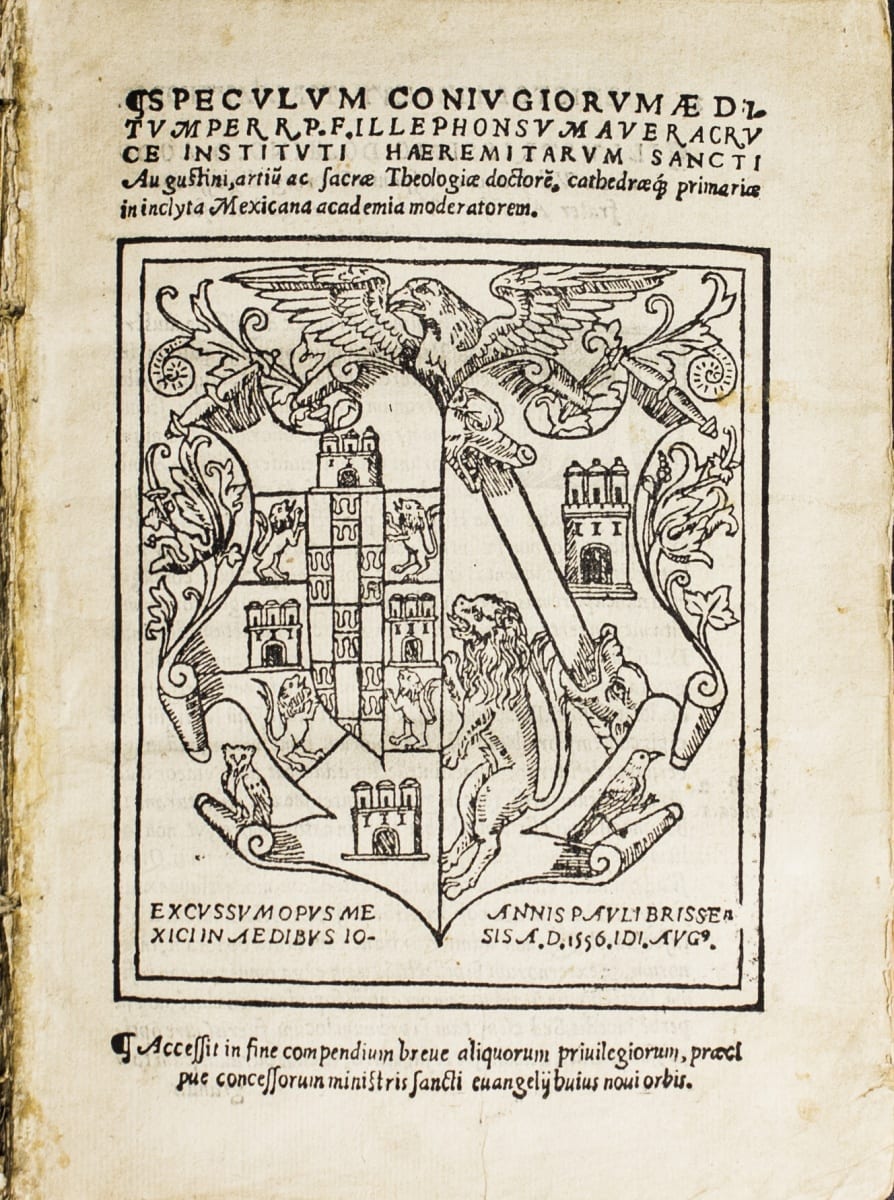
Alberico Gentili, De legationibus, libri tres. London: Thomas Vautrollier, 1585;
De iure belli libri tres, edited by Thomas Erskine Holland. Oxford: Clarendon Press, 1877.
To escape the Inquisition, the Italian jurist Alberico Gentili moved to England in 1580, where he practiced law and was an advocate for the Government of Spain in the English courts. De legationibus, published in 1585, is one of Gentili’s three books of great significance for international law. This treatise on the law of embassies and the conduct of ambassadors arose from Gentili’s winning argument that the Spanish ambassador Mendoza ought to be expelled rather than criminally punished for plotting against Queen Elizabeth. De jure belli began as three tracts prepared in 1588-1589 during English debates on issues of war prompted by the Spanish Armada. These writings greatly influenced Grotius’ work, especially On War and Peace, the treatise credited with helping establish the modern law of nations.
Hugo Grotius, De iure belli ac pacis libri tres.
Amsterdam: William Blaeu, 1632.
Grotius is known as the father of international law largely because of this classic work, On War and Peace, the first modern formulation of international law. First published in 1625, it argues that freedom depends on the rule of law, “the law of nations” as developed by the collective will of sovereign states. Grotius emphasized the potential of cooperative international efforts as a means of making international law.
.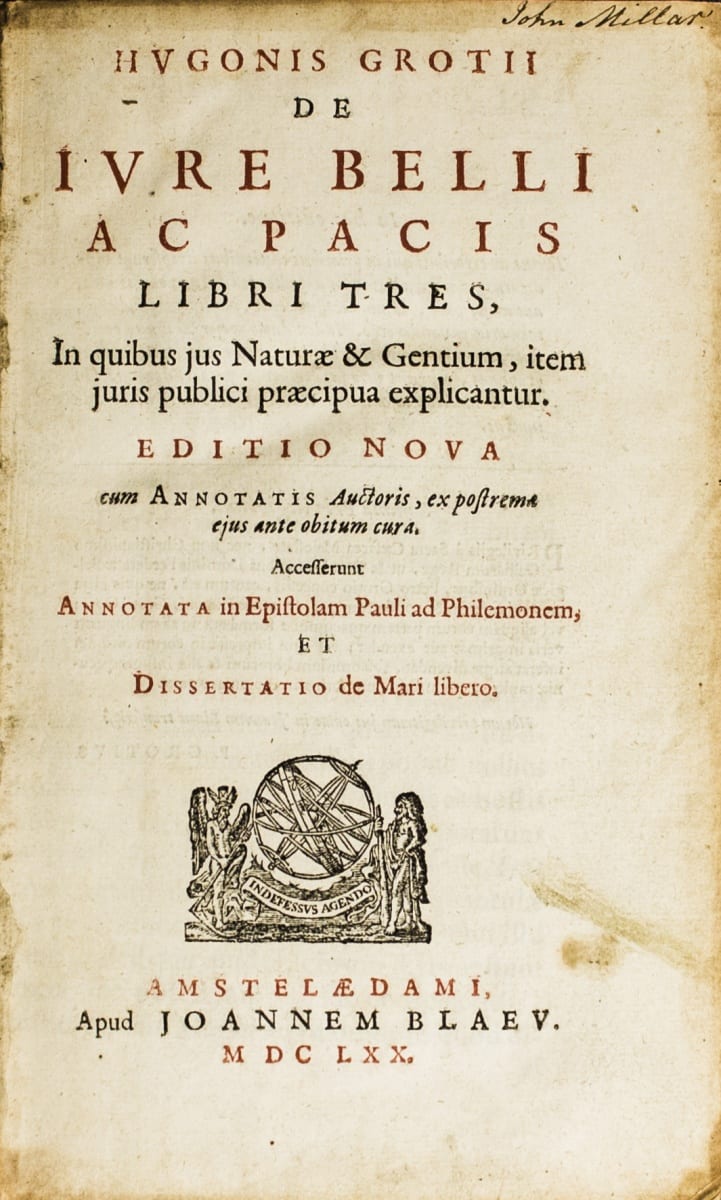
Thomas Hobbes, Leviathan; or, The matter, forme. & power of a common-wealth, ecclesiasticall and civill.
London: Printed for Andrew Crooke, at the Green Dragon in St. Paul’s Churchyard, 1651.
This is a first edition of Hobbes’s monumental work on jurisprudence and the state, focusing on natural law theory and its centrality in the nature, origins, and foundation of the state, civil society, and political and moral philosophy. In this treatise, Hobbes examines not only the relationship between a civil commonwealth and religious commonwealth. These themes are evident in the book’s famous frontispiece engraving, devised by Hobbes himself, which depicts at its top the “Leviathan” that is the state, a body politic comprised of its citizens with the sovereign as its head, and underneath, a series of images symbolizing civil and religious forms of authority, power, and conflict.

Inca Garcilaso de la Vega, The royal commentaries of Peru, in two parts: the first part: treating of the original of their Incas or kings, of their idolatry, of their laws and government both in peace and war, of the reigns and conquests of the Incas…: the scond [sic] part: describing the manner by which that new world was conquered by the Spaniards, also the civil wars between the Piçarrists and the Almagrians…
London: M. Flesher for C. Wilkinson, 1688.
Born in Cuzco in 1539, “El Inca”’ Gracilaso de la Vega, as he is known, was the son of an Inca princess, the granddaughter of Emperor Tupac Inca Yupanqui and a Spanish conquistador and colonial corregidor of Peru. Raised in the house of his father, Garcilaso nonetheless grew up speaking both Quechua and Spanish and learned the history and culture of the Inca from his mother’s family. In 1561 he left Peru for Spain, where he received a classical education and served in the army. But despite his powerful father and noble mother, he was shunned at the Spanish court for his mixed heritage. Stung by this exclusion and proud of his Inca identity, he retreated into years of scholarship, producing his most important work, the Comentarios Reales de los Inca in 1609. Published in English as the Royal Commentaries of Peru, the Comentarios chronicled the history of the Inca dynasty and offered extensive discussion of its laws, religion, and cultural practices. It was the first written history of the Incas, whose culture and knowledge was transmitted largely through oral tradition until the conquest.
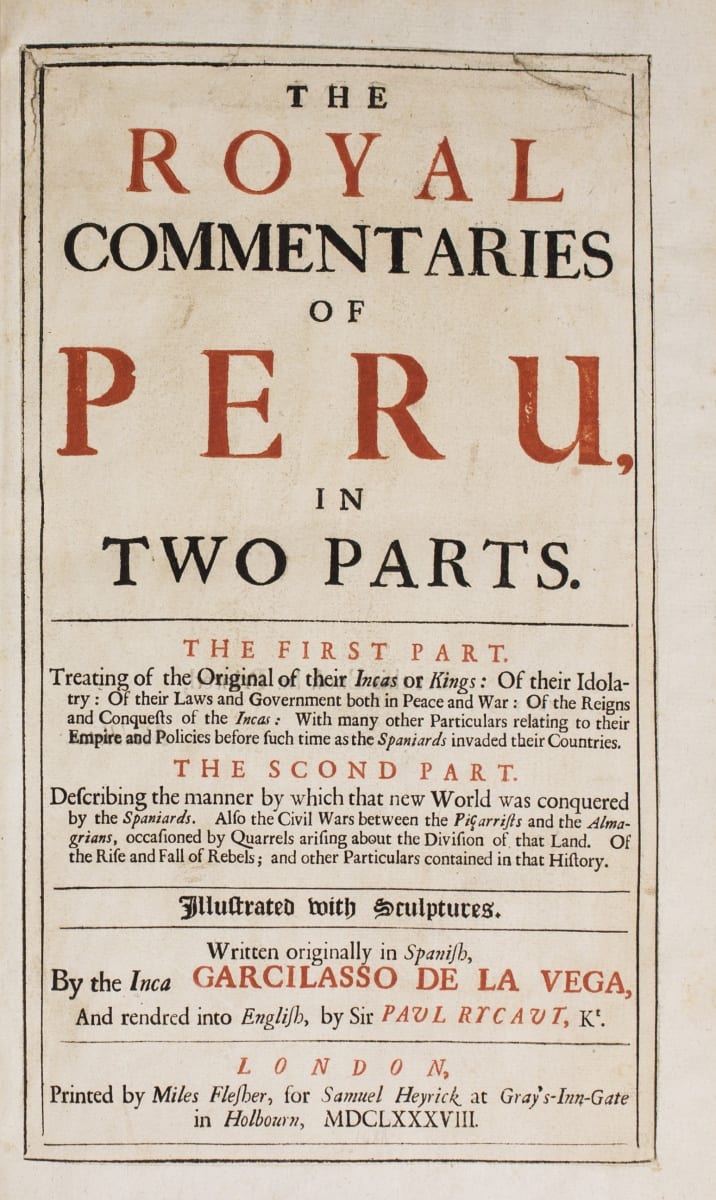
Recopilación de leyes de los reynos de las Indias: mandadas imprimir, y publicar por la Magestad católica del rey don Carlos II, nuestro señor…
Madrid: Julián de Paredes, 1681.
The four-volume Recopilación de leyes was the first comprehensive compilation of the laws governing the Spanish colonies in America and the Philippines, created by order of Spanish King Charles II in 1680. Since Ferdinand II issued the Laws of Burgos in 1512 to govern treatment of the indigenous peoples, the Spanish crown had repeatedly attempted to address the new legal exigencies of the Americas. While Castilian law formed the basis of private law in the New World, the distinct social, political and economic conditions in the colonies demanded that public law be crafted specifically for them. The first complete official edition was a gift of the California Supreme Court Library.
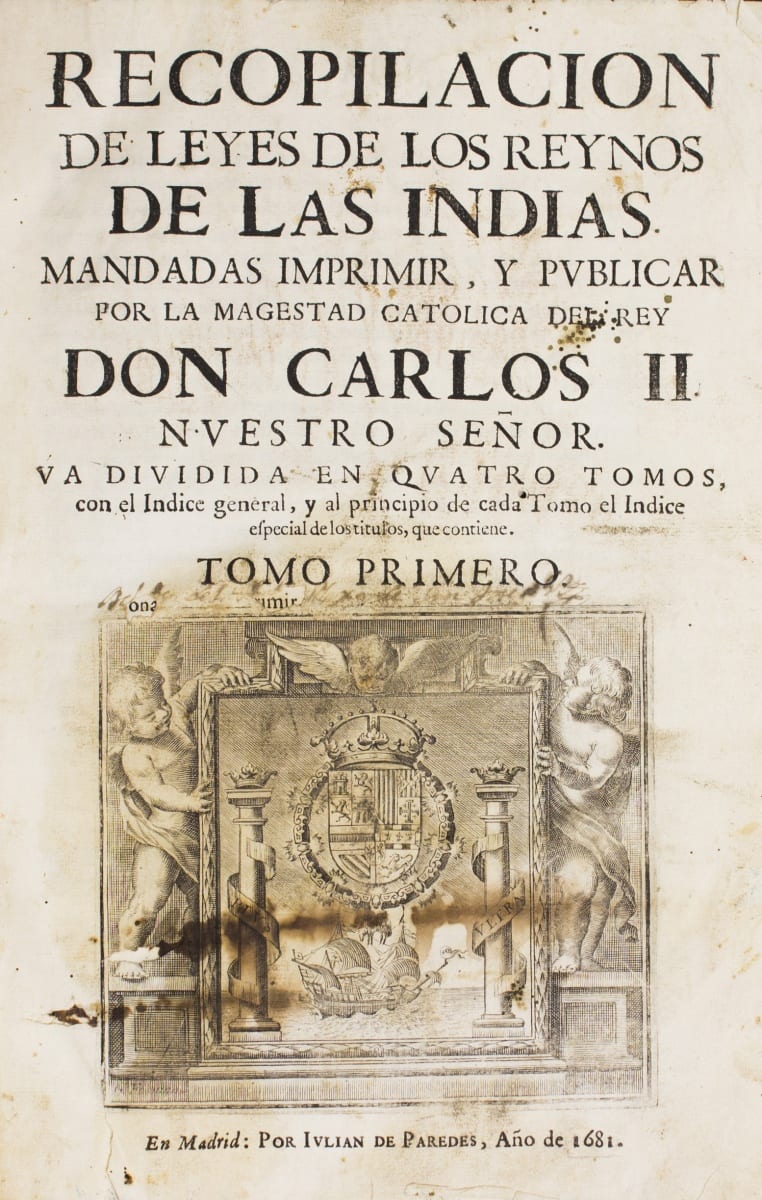
Moses Maimonides, Perush ha-Mishna.
Yemen, 1750.
This commentary on the Mishnah—the first written recording of the oral law of the Jewish people—was written in Arabic by the renowned twelfth-century Spanish rabbinic scholar Maimonides. This early work may be regarded as a preliminary stage in the composition of Maimonides’ own comprehensive law code, the Mishnah Torah. Written on glossy, Yemenite paper in a square, Yemenite Hebrew script, this eighteenth-century manuscript edition contains the text of the introduction to the Order of Zera‘im (the first section of the Mishnah), as well as the text of the Mishnah, with the accompanying commentary. There are many diagrams in red, black, and green ink, some square, some circular, particularly in tractate Kela’im (fol. 5IV-68V), which depict planting guides for fields. The dark, tooled-leather binding has an envelope flap at the fore edge, which is characteristic of Middle Eastern bindings.
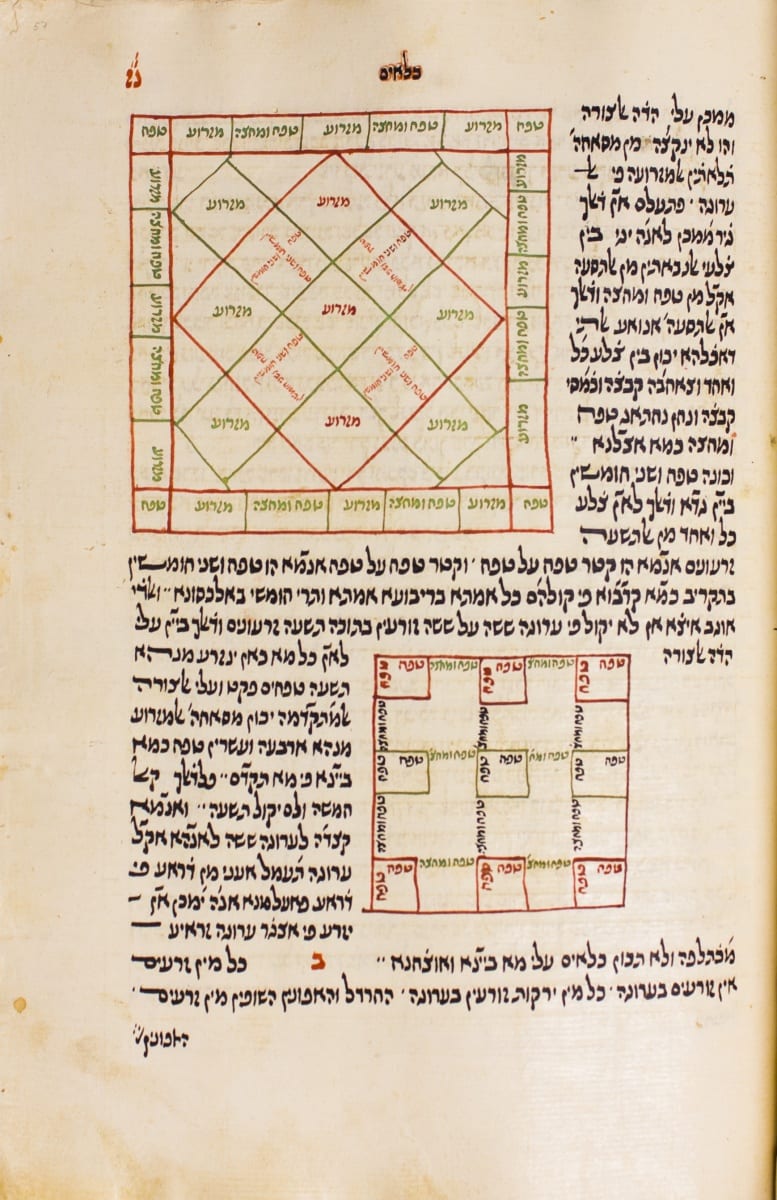
Charles de Secondat, Baron de Montesquieu, De l’espirit des loix, ou du rapport que les loix doivent avoir avec la constitution de chaque gouvernement, le moeurs le climat, la religion, le commerce, &c.
Geneva: Barrillot, 1750-I.
Often called the “father” of comparative law, Montesquieu based his analysis of political and civil laws and social institutions on the conviction that the laws of any nation should be adapted “to the people for whom they are framed” based upon their particular nature of government, commerce, physical resources, religion, and culture. Written in pre-revolutionary France, The Spirit of Laws compares what Montesquieu held to be the three essential forms of government: republicanism, monarchy, and despotism. Deeply concerned with the ever-present danger of a state falling into despotism, he argued that this was best avoided in a system of government where legislative, executive, and judicial power were separate from each other and bound by the rule of law. First published less than thirty years before the American Revolution, Montesquieu’s theory of the separation of powers greatly influenced the framers of our Constitution.
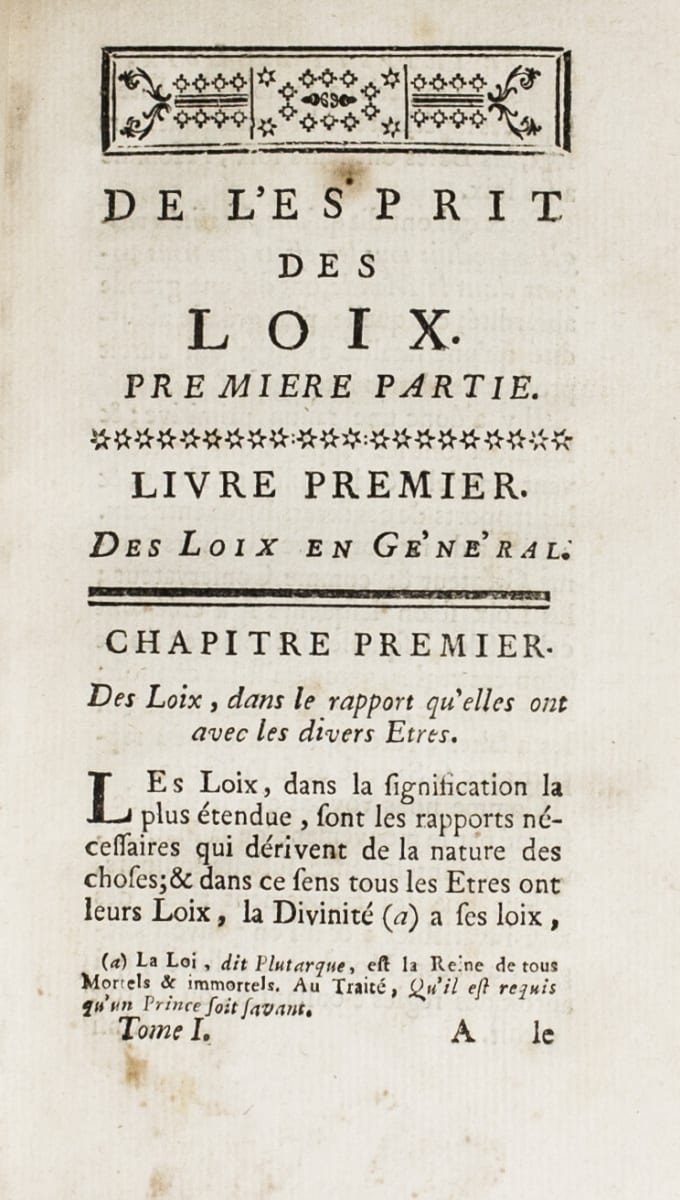
Sir William Blackstone, Commentaries on the Laws of England.
Oxford: Clarendon Press, 1765-1769.
First edition, bound in original boards with pages uncut. Published in four volumes, the Commentaries were the first treatise on common law that was comprehensive yet accessible to a lay audience in the early modern era. Each volume addresses a distinct area of law: The rights of persons, torts and property law, civil procedure and remedies, and criminal law and procedure. Together, they give a methodical, rational overview of English common law and its development through the mid-eighteenth century. Considered by some scholars to be “the most important legal treatise ever written in the English language,” the Commentaries were the preeminent text on common law in England and America in the century after its publication and served as a foundation for Common Law in the developing American legal system.
Sir William Jones, Institutes of Hindu law, or The ordinances of Menu: according to the gloss of Cullúca: comprising the Indian system of duties, religious and civil. London: J. Sewell, 1796.
This is the first English edition of Brahmanic code, translated by British philologist and scholar of India, Sir William Jones. It was first published in 1794, twenty-one years after the British Parliament asserted its sovereignty over the East India Company, solidifying its governmental control of India. The smriti (scriptural writings) of Menu, or Manu, are one of the nineteen Dharmaśāstra, important Sanskrit texts on dharma, religious and legal duty. Modern scholars have pointed out that the Manusmriti were more codes of conduct and social norms than formal legal codes, as Jones, given their sophisticated treatment of issues of jurisprudence, understood them to be. Due in great measure to his influential translation they were widely taken to be the law of the land in India, and are still commonly thought of today as a source of classical Hindu law. While they may be a source of debate for Hindu legal scholars, the Manusmriti nonetheless represent the first significant introduction to the Western world of the religious and civil codes that shaped Indian society over centuries.
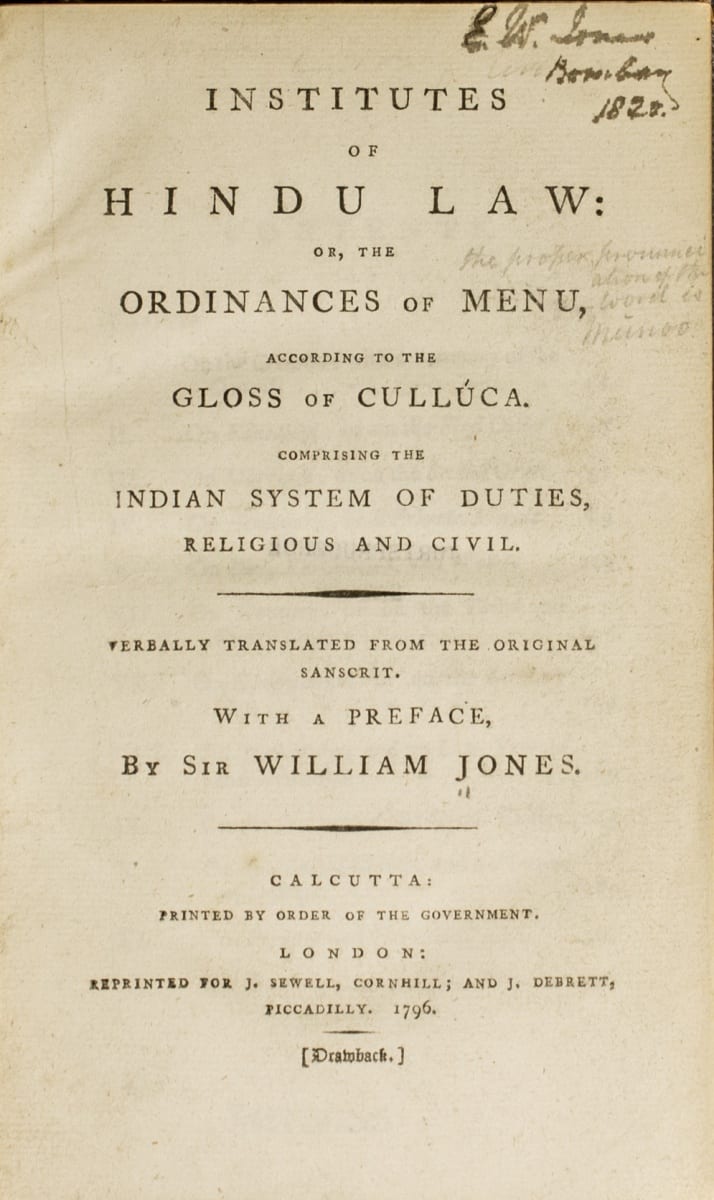
Code civil: contenant la série des lois qui le composent, avec leurs motifs, et un extrait des discours pronouncés au Tribunat et au Corps législatif, sur les matières les plus importantes… Paris: Garnery, an XI [1803]—an XII [1804]. Five volumes.
Code Napoléon, nouvelle éd., conforme à l’édition originale de l’imprimerie impérial; à laquelle on a ajouté les lois transitoires. Paris: Stereotype d’Herhan, de l’Impr. des Frères Mame, 1807.
The French Civil Code was promulgated on March 21, 1804 by the order of Napoleon Bonaparte, who regarded as one of his greatest legacies the codification of French law, a culmination of the efforts made in revolutionary France to replace the confusion of ancien régime royal, feudal and customary laws and the inequality of their application with a uniform set of civil laws. Indeed, the code was and is so closely identified with Bonaparte, that by 1807 it became known also as the Code Napoléon. While the French code was not the first to be codified in modern Europe, it was the most influential codification throughout Europe and the rest of the world during the nineteenth-century, providing the dominant model for most other codifications until the creation of the Germanic civil code nearly a century later. The strength of the code may be seen in the fact that despite the great social and political changes that France has undergone in the past two hundred years, nearly 1,200 out of the 2,218 articles of the code remain in their original form.
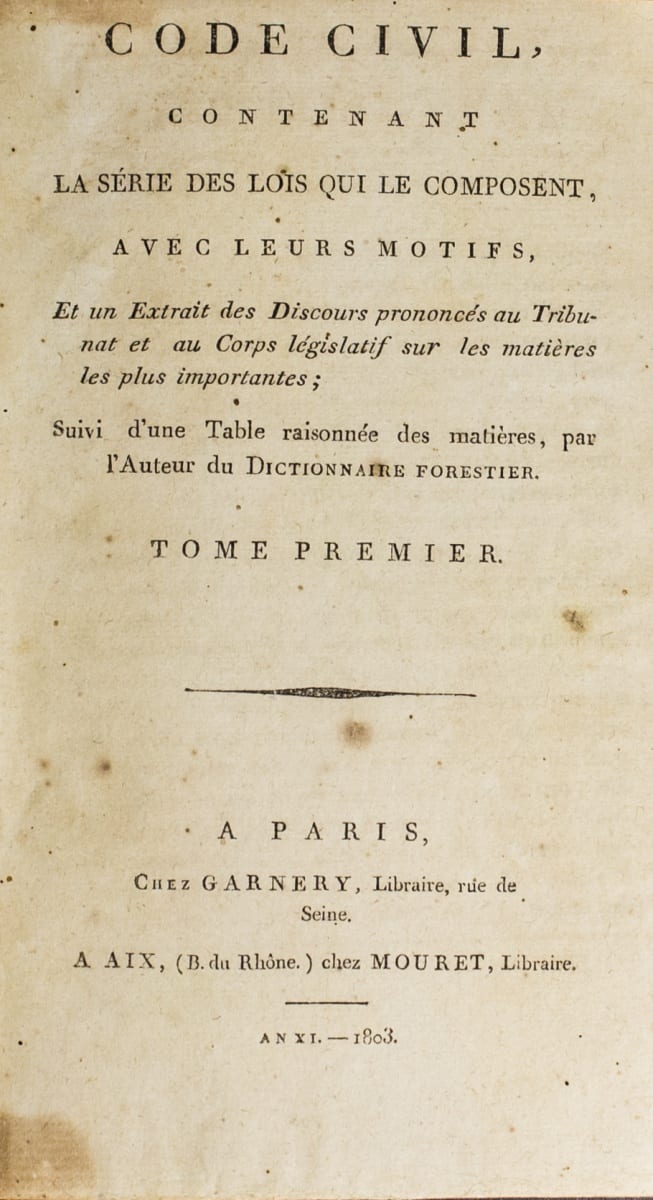
Sir George Thomas Staunton, Ta Tsing Leu Lee; being the fundamental laws, and a selection from the supplementary statutes, of the Penal code of China; originally printed and published in Pekin, in various successive editions, under the sanction, and by the authority, of the several emperors of the Ta Tsing, or present dynasty… London: T. Cadell and W. Davies, 1810.
Also known as the Ta Ch‘ing lü or the Great Qing Legal Code, this was the legal code of the Qing dynasty (1644-1912), and was in fact the last legal code of imperial China. Staunton’s translation was the first in a European language and represents one of the first scholarly products of the modern West’s relations with China.
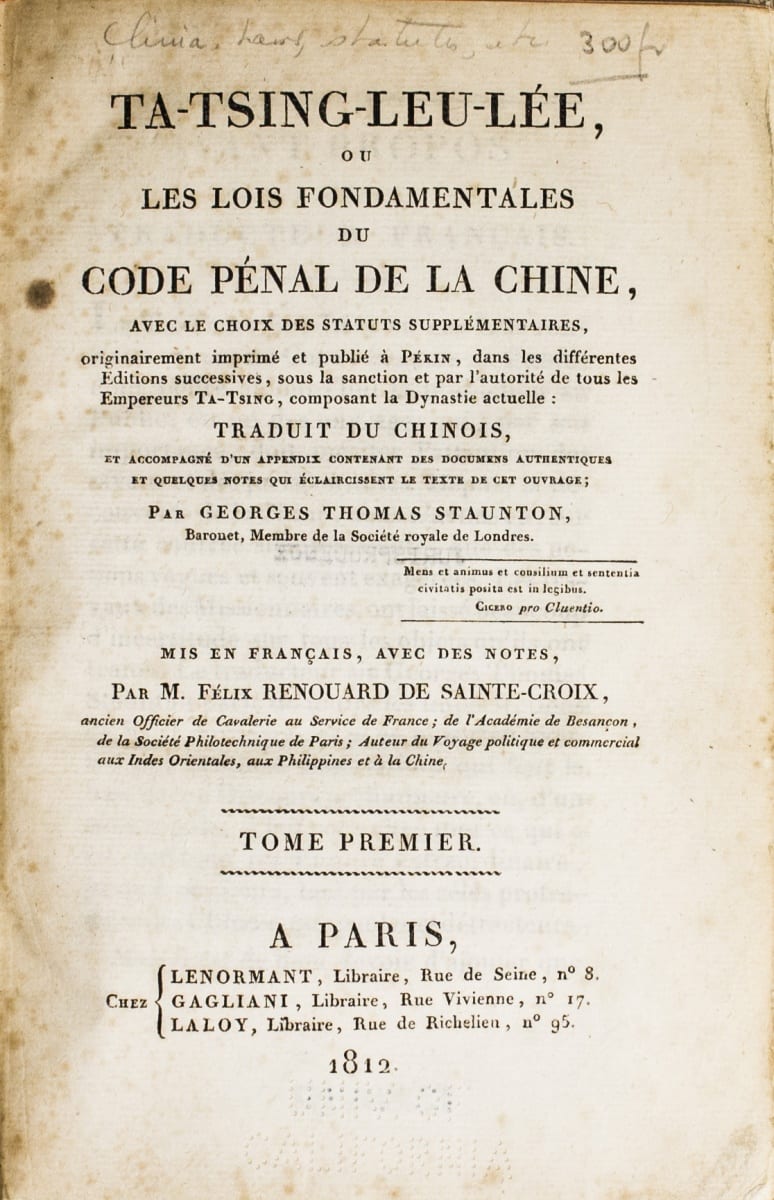
Henry Wheaton, Elements of International Law: with a sketch of the history of the science.
Philadelphia, 1836.
This work is considered one of the most valuable contributions to the field of international law made during the nineteenth century. Soon after its original publication in 1836, it was translated into many languages including French (1848), Spanish (1854), Italian (1860) and Chinese (1864), and has subsequently gone through many editions and translations.
Ke kumu kanawai, a me na kanawai o ko Hawaii pae aina. Ua kau ia I ke kau ia Kamehameha III.
Honolulu, 1841.
This volume, written in Hawaiian, includes the first constitution of Hawaii as well as the first laws passed under the fledging constitution. It marks the establishment of a constitutional monarchy under King Kamehameha III and the foundation of the Hawaiian legal system.
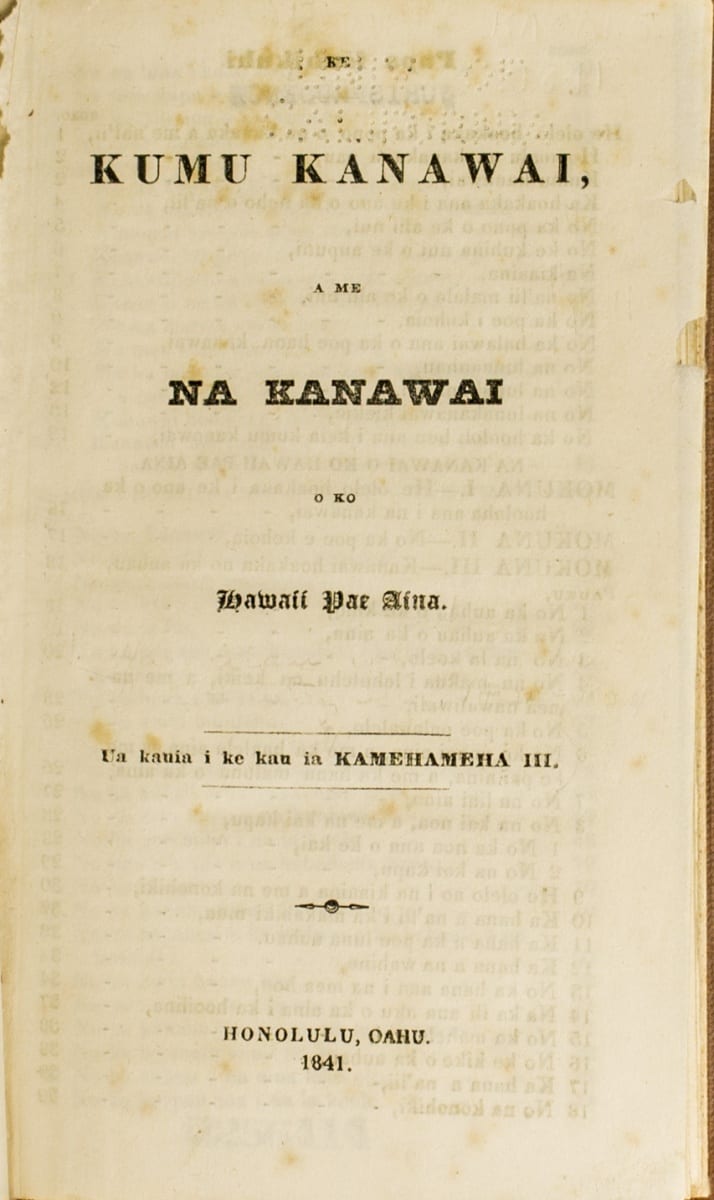
Mexico, Código Civil del Distrito Federal y Territorio de la Baja-California.
Mexico: J.M. Aguilar Ortiz, 1873.
The first national Mexican civil code is the product of President Benito Júarez’s restoration of republican and federal government to Mexico after the end of the French control of Mexico under Emperor Maximilian (1862-67). Upon restoration to the presidency, Júarez formed commissions of Mexican jurists to resume the codification project interrupted by the arrival of the French, drafting civil, criminal, and commercial codes. The Civil Code was promulgated on December 8, 1870. It incorporated elements of an initial 1861 code draft and Maximilian’s 1866 Civil Code of the Mexican Empire, and it also used the 1804 French code, the 1867 Portuguese code, Swiss, Swedish, and other codes. While promulgated for the federal district of Mexico City, it was swiftly adopted in nearly identical form by all of the Mexican states, and is considered the founding document for modern Mexican civil law.
Cherokee Nation. [Laws and Joint Resolutions of the National Council, 1870-1872]. Tahlequah: s.n., 1872.
Choctaw Nation, Laws of the Coctaw nation. Atoka, Oklahoma: Indian Citizen Print, 1891.
Chickasaw Nation, Chikasha okla i kvnstitushvn micha i Nan vlhpisa mich Yonaitet Estets Nan ittim apehinsa… Parsons, Kansas: Foley Railway Printing Co., 1899.
In the 1830s, the Cherokee, Chickasaw, Choctaw, and other Native American tribes constituted themselves as “nations,” establishing treaties with the United States and writing their own constitutions between 1830 and 1900. The Cherokee and Choctaw created legal institutions that closely paralleled those of the United States. Tribal constitutions and laws were sometimes written in both the tribal language and English, as with the Chickasaw and Choctaw editions, or solely in the tribal language, as in this edition of Cherokee law.
![Cherokee Nation. [Laws and Joint Resolutions of the National Council, 1870-1872]. Tahlequah: s.n., 1872. Choctaw Nation, Laws of the Coctaw nation. Atoka, Oklahoma: Indian Citizen Print, 1891. Chickasaw Nation, Chikasha okla i kvnstitushvn micha i Nan vlhpisa mich Yonaitet Estets Nan ittim apehinsa… Parsons, Kansas: Foley Railway Printing Co., 1899.](https://www.law.berkeley.edu/wp-content/uploads/2016/12/kf8228_c43_a5_1872.jpg)
Oliver Wendell Holmes, The Common Law.
Boston: Little, Brown, and Company, 1881 (2009 edition).
This landmark work on American legal history and jurisprudence arose from a series of articles and lectures produced by the attorney, judge, and legal scholar at the Lowell Institute in Boston. Including torts, property, contracts and crime in its scope, The Common Law has a reputation for being, as Robert W. Gordon notes, “odd, difficult, confusing, and sometimes dazzling.” After a distinguished career as an attorney and supreme court judge in Massachusetts, Holmes was appointed by President Theodore Roosevelt to the Supreme Court in 1902, where he served for thirty years.
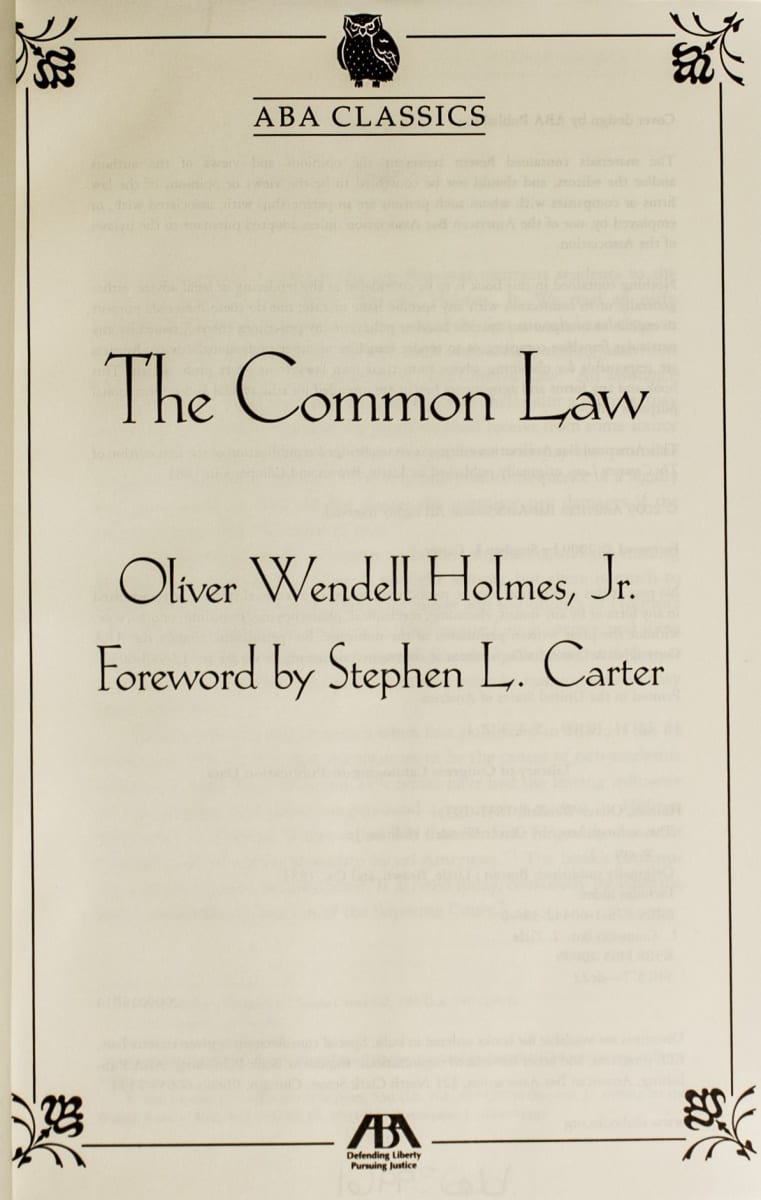
The code of civil procedure of Japan: promulgated on the 21st day of the 4th month of the 23 year of Meiji (21st April 1890)…
Tokyo: [Hakubunsha], 1893.
This Japanese Civil Code was largely based on French law, and was even drafted by a French jurist. However, the code in this form never became the law of Japan because it was criticized for being too close to the French code and also for ignoring the nearly completed German Civil Code of 1896. The Japanese Civil Code ended up being redrafted by Japanese jurists under the influence primarily of the German code, and this revised code went into effect in 1898. This 1891 attempt thus highlights a crucial period of transition and debate in Japan’s codification process and illustrates the challenge that many countries faced at the end of the nineteenth century in determining the role of the dominant French and German codes as models.
Le Code pénal de la Corée, Tai-han hyeng pep, translated by Laurent Crémazy.
Seoul, 1904.
This is a French translation of the 1901 draft of the Korean criminal code, which at the time of the publication of this book was still awaiting official approval by the Korean Grand Council. This code was largely based on the Qing Legal Code of China, and the book contains not just the translation, but also a comparative analysis of the Chinese legal code, on which it is based, and the code of Indochina. The translator was a French jurist who was acting as a legal consultant to the Korean government and made important contributions to Korean legislation and the legal education.
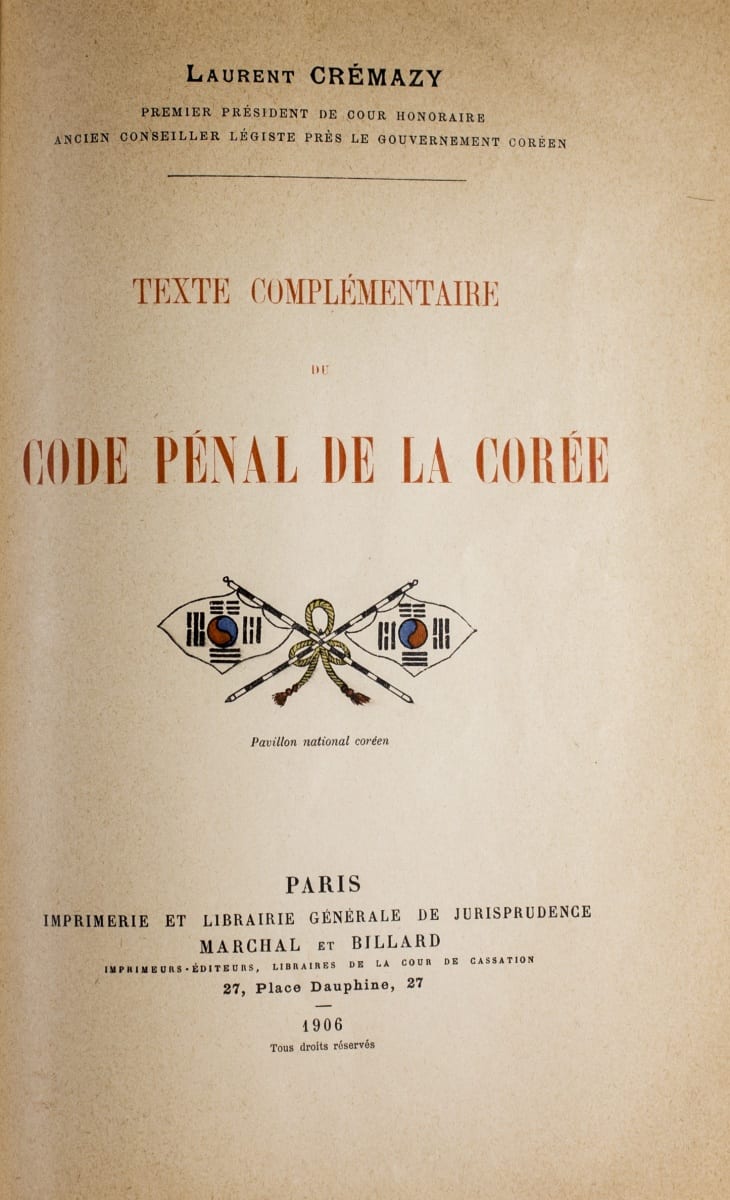
John Henry Wigmore, A Panorama of the World’s Legal Systems: with Five Hundred Illustrations.
Saint Paul: West Publishing Company, c. 1928.
John H. Wigmore was a famous and well respected lawyer, legal historian, and professor of law. He served as dean of the Northwestern University School of Law and was a pioneer in the field of teaching comparative law. Panorama was written as a popular outline of sixteen legal systems throughout the ages and is based on Wigmore’s lectures at Northwestern. Despite its simplified structure, this book reached beyond its intended lay audience and has been well received by students and scholars in comparative law.
United Nations, Treaty Series. New York: United Nations, 1947.
The Law Library has an invaluable collection of United Nations legal documents and other sources about the world body, including the complete print collections of the United Nations Treaty Series (U.N.T.S.) and its predecessor the League of Nations Treaty Series (L.N.T.S.). U.N.T.S. contains over 158,000 bilateral and multilateral treaties and subsequent treaty actions in their authentic language(s), along with a translation into English and French, as appropriate.
Molla Hüsreve, Mirat-ul-usûl, tam Kayitli.
Istanbul: Ergin Kitabevi, 1966.
A commentary on the author’s own work entitled Mirqat al-wusül, the text of which is included. Reprint of the edition published in Istanbul in 1899. Molla Hüsrev was a celebrated fifteenth-century Ottoman jurist whose most famous juridicial works were Durar al-Hukkam fi Sharh Ghurar al-Ahkam, on the principles of legal practice, and the more theoretical Mirat-ul-usûl, tam Kayitli, a commentary on the author’s own work entitled Mirqat al-wusül. Hüsrev played an important role in the development of legal education during the reign of Sultan Mehmed II, whose conquest of Constantinople in 1453 brought an end to the Byzantine Empire. This was a period of important educational development and innovation in the Ottoman madrasas, a system of schools initially founded in the eleventh century with the primary objective to teach the science of Islamic jurisprudence. During the reign of Mehmed II, under the aegis of scholars and jurists such as Hüsrev, who founded serveral madrasas, curricular focus was expanded to include disciplines such as mathematics, philosophy, and sciences, in order to create a body of state administrators both knowledgeable in their diverse areas of competence and trained in the requirements of Islamic jurisprudence and customary practice.
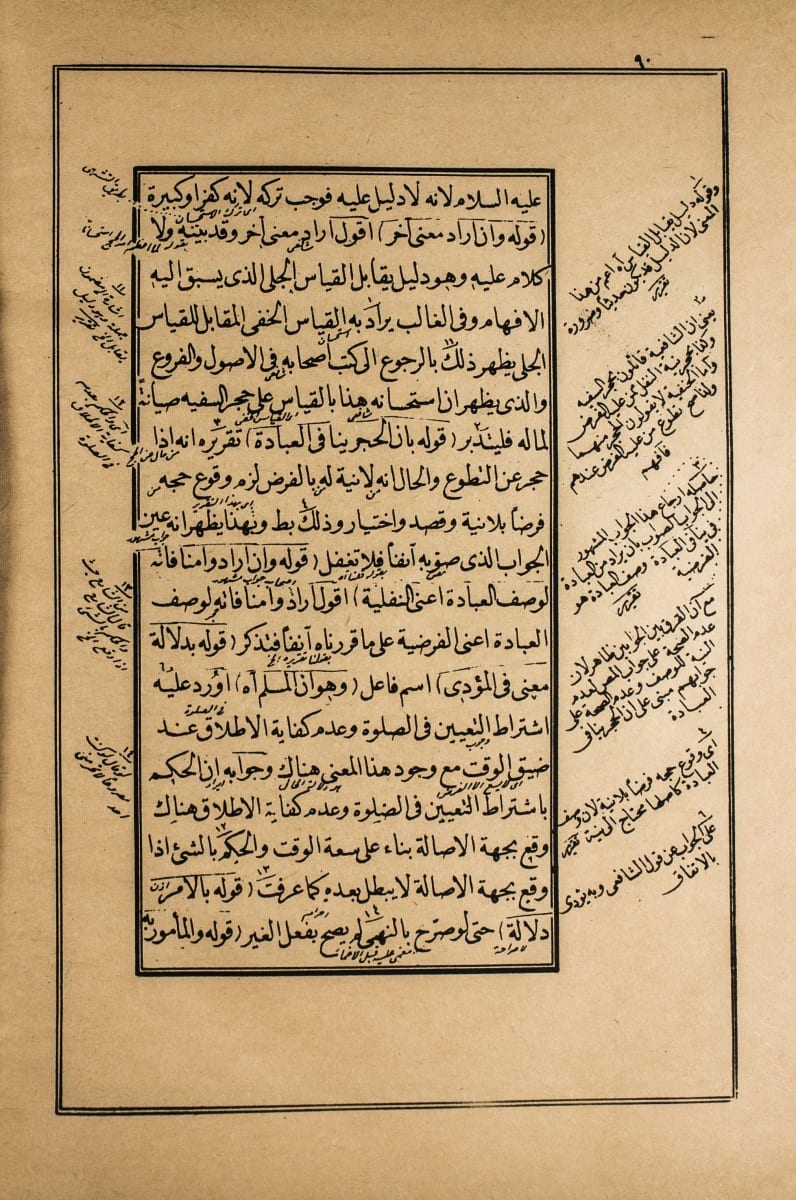
R.H. Helmholz, Select Cases on Defamation to 1600.
London: The Selden Society, 1985.
The Selden Society, founded in 1887, is a scholarly society and publisher focusing on English legal history, including early law reports, court records, judicial notebooks, legal treatises, precedent and practice books, and other original source materials such as Selected Cases on Defamation to 1600, which offers cases in both English and Law French. Law French, originally based on Anglo-Norman but heavily influenced by Parisian French, was used in English courts from 1066 and continued for centuries. The influence of Law French persists in today’s legal lexicon, as the source of the distinctive inverted syntax in phrases such as “attorney general.”
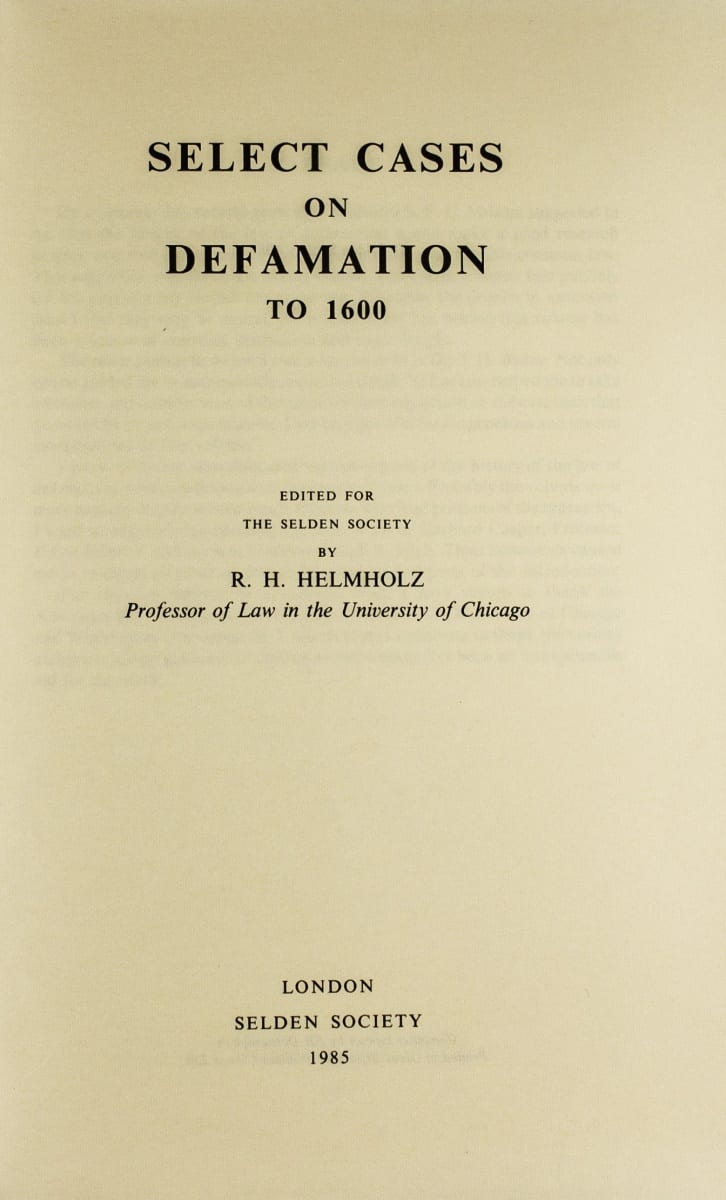
Recent titles in Islamic law.
As in all of the fields of law represented here, the resources that the Robbins Collection Center and the Law Library have to offer in both theory and practice of religious law are not limited to historical texts. We are active in our acquisition of new titles that examine the continuously evolving role that religious traditions play in global politics and legal culture throughout the world. The ongoing expansion of our holdings in Islamic law is a good example of our constant effort to make our collections comprehensive resources that are responsive to the timely and groundbreaking work being done by Berkeley Law’s scholars and research centers.
